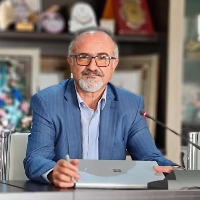Investigating Social Capital in Three Spatial Layers of Sanandaj City: Informal Settlements, Old/Central and Planned Neighborhoods
Author(s):
Abstract:
Social capital is a relatively new concept that has been identified as the key explanatory factor in economically prosperous territorial communities. It is a collection of actual or potential resources that emerges as a result of the institutional ties in the context of social networks which can improve citizens’ life. Since these social relations have a spatial dimension, so too the social capital. Depending on the kind of the ties and interactions, different types of social capital may exist. This, in turn, may include different spatial dimensions of social capital. In this regard, as social capital can have a great role through being integrated into the concept of neighborhood, the context which contains common interests and face-to-face relationships of its inhabitants, this study aims to investigate the level of social capital in three spatial layers at the community level in order to recognize the presence or absence of social capital and to identify the reasons behind them. The research strategy is primarily a quantitative one, in which three neighborhoods has been chosen as three different spatial layers (Informal settlements, old/central and planned neighborhoods) in the city of Sanandaj. Their social capital has been investigated through field survey using a designed questionnaire in summer 2012, where 150 questionnaires were randomly distributed among residents of each neighborhood. The administration method of the survey involved face-to-face interviews with residents. Data was analyzed using AHP method to determine correlations between the variables (comparative analysis of the three neighborhoods). This involved testing factors associated with social capital, identifying the key relationships and where the differences were between the neighborhoods. The results of this study indicate that the maximum level of social capital is in Abbas Abad (the informal settlement), the average level in Ghatarchian (downtown) and the minimum level in Mobarak Abad (the planned) neighborhoods. However, this classification mostly covers the content of bonding social capital and the next two dimensions of social capital (bridging and linking) are relatively the same across the neighborhoods. In other words, the highest level of social capital in the field study is associated with the bonding dimension of social capital and the least level of social capital is related to bridging and linking dimensions of social capital. The study reveals that the ‘concept of “neighborhood” is not a fixed one according to the survey findings and based on residents’ perceptions of their neighborhood boundaries. Another finding is related to the level of social capital. While the level of social capital is a good indicator of the ‘quality of the neighborhood’, the social capital cannot be seen as the factor which ‘causes’ neighborhoods to be ‘better’ places to live. The findings of this study suggest that social capital of positive community will tend to occur in neighborhoods with associated positive impacts, rather than causing it.
Keywords:
Language:
Persian
Published:
Journal of Architecture and Urban Planning, Volume:7 Issue: 13, 2014
Page:
133
magiran.com/p1315071
دانلود و مطالعه متن این مقاله با یکی از روشهای زیر امکان پذیر است:
اشتراک شخصی
با عضویت و پرداخت آنلاین حق اشتراک یکساله به مبلغ 1,390,000ريال میتوانید 70 عنوان مطلب دانلود کنید!
اشتراک سازمانی
به کتابخانه دانشگاه یا محل کار خود پیشنهاد کنید تا اشتراک سازمانی این پایگاه را برای دسترسی نامحدود همه کاربران به متن مطالب تهیه نمایند!
توجه!
- حق عضویت دریافتی صرف حمایت از نشریات عضو و نگهداری، تکمیل و توسعه مگیران میشود.
- پرداخت حق اشتراک و دانلود مقالات اجازه بازنشر آن در سایر رسانههای چاپی و دیجیتال را به کاربر نمیدهد.
In order to view content subscription is required
Personal subscription
Subscribe magiran.com for 70 € euros via PayPal and download 70 articles during a year.
Organization subscription
Please contact us to subscribe your university or library for unlimited access!




